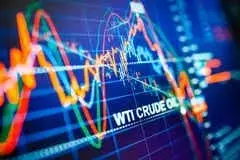The global energy markets have been in a state of flux, with crude oil futures experiencing a rollercoaster ride in recent days. Amid concerns over U.S. crude inventory levels and simmering tensions in the Middle East, traders and analysts are closely monitoring the ebb and flow of this vital commodity.
Navigating the Volatile Crude Oil Landscape
Inventory Levels and Demand Concerns
The latest data from the U.S. Energy Information Administration (EIA) revealed a larger-than-expected build in commercial crude oil stockpiles, excluding the Strategic Petroleum Reserve. This unexpected increase in inventory levels has sparked concerns about the strength of global energy demand, leading to a pullback in crude oil futures. Traders and analysts are closely watching these inventory figures, as they provide crucial insights into the supply-and-demand dynamics that shape the oil market.The EIA report highlighted a rise in crude oil inventories, which can be interpreted as a potential slowdown in consumption or a mismatch between supply and demand. This development has prompted some market participants to reevaluate their outlook on the energy sector, as they weigh the implications of these inventory shifts on the broader economic landscape.Geopolitical Tensions and Their Impact
Alongside the inventory data, the global energy markets have also been grappling with the ongoing geopolitical tensions in the Middle East. The region, which is a crucial hub for oil production and transportation, has long been a source of volatility for the energy sector.Recent developments, such as the ongoing conflicts and diplomatic tensions in the region, have added an additional layer of complexity to the oil market. Traders and investors are closely monitoring these geopolitical events, as they have the potential to disrupt supply chains, impact production levels, and ultimately influence the price of crude oil.The delicate balance between supply, demand, and geopolitical factors has created a dynamic and unpredictable environment for energy market participants. As they navigate this volatile landscape, they must carefully weigh the various factors at play and adjust their strategies accordingly.Diversification and Risk Management Strategies
In the face of these market fluctuations, energy investors and traders are exploring a range of diversification and risk management strategies to mitigate their exposure and optimize their portfolios. This may involve exploring alternative energy sources, such as renewable and clean energy options, as well as implementing sophisticated hedging techniques to manage price volatility.The ability to adapt to changing market conditions and adopt a proactive approach to risk management will be crucial for those seeking to navigate the complex and dynamic energy landscape. By staying informed, analyzing the latest data, and employing strategic decision-making, market participants can position themselves to capitalize on the opportunities that arise amidst the volatility.The Evolving Energy Landscape
The energy sector is undergoing a transformative shift, driven by a range of factors, including technological advancements, environmental concerns, and shifting consumer preferences. As the world transitions towards a more sustainable energy future, the role of traditional fossil fuels, such as crude oil, is being reevaluated and challenged.This evolving landscape presents both challenges and opportunities for energy market participants. While the demand for crude oil may face headwinds in the long term, the industry is also exploring innovative solutions and alternative energy sources to meet the growing global energy needs.As the energy landscape continues to evolve, market participants must stay agile, adaptable, and attuned to the latest trends and developments. By embracing a forward-looking mindset and diversifying their portfolios, they can position themselves to thrive in the face of the ongoing changes and uncertainties that characterize the energy sector.
